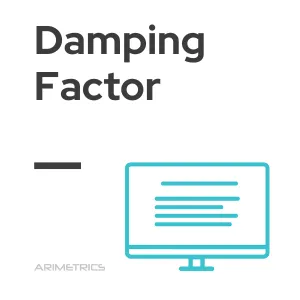 Definition:
Definition:
The damping factor is a term used in two main contexts. In audio, it refers to the measurement of the sound quality of an amplifier. However, in the digital marketing sector, specifically in SEO, the damping factor refers to the loss of link juice or authority of a website when linking to another page. This concept is fundamental in linkbuilding strategies, as it affects search engine rankings. The more intermediaries there are in the links, the lower the positive impact of link juice, which can result in a loss of traffic and authority when linking to low quality pages.
Importance of the Damping Factor in SEO
Domain authority is fundamental to improve SEO and climb positions in search results pages (SERP). The damping factor allows SEO specialists to identify which links are most beneficial, quantifying the loss of authority or link juice. This knowledge is essential to design effective linkbuilding strategies, since accumulating high quality links improves link juice and, therefore, the site’s authority, which translates into better visibility in searches.
How to optimize the Damping Factor
To optimize the damping factor, it is important to focus on link quality rather than quantity. Specialists should prioritize obtaining backlinks from websites of high authority and relevance rather than massive links of low quality. In addition, it is important to regularly evaluate the website’s link profile and remove or disavow links that may be negatively affecting link juice. Implementing these practices will help maximize domain authority and improve search engine rankings.
Damping Factor Calculation
The calculation of the damping factor is based on the PageRank formula, which considers both the quality and quantity of links a page receives. The formula is as follows:
PR(A) = (1-d) + d (PR(T1)/C(T1) + … + PR(Tn)/C(Tn))
- PR(A) represents the ranking of the page to be evaluated.
- d is the damping factor, which is between 0 and 1.
- Tn indicates the quality of the cited link.
- C is the total number of links on the page.
This calculation allows SEO specialists to understand how link juice is distributed between linked pages, which is essential to optimize positioning strategies.
